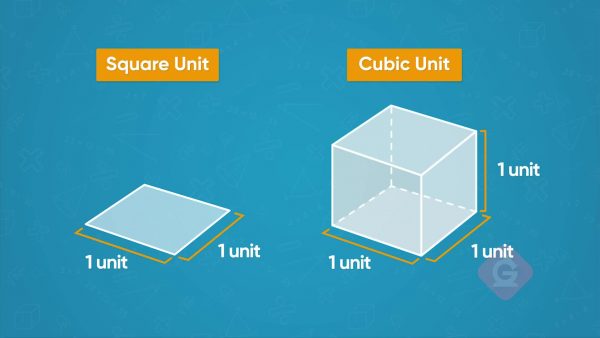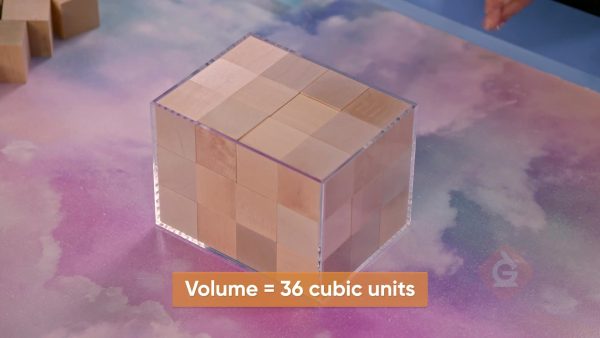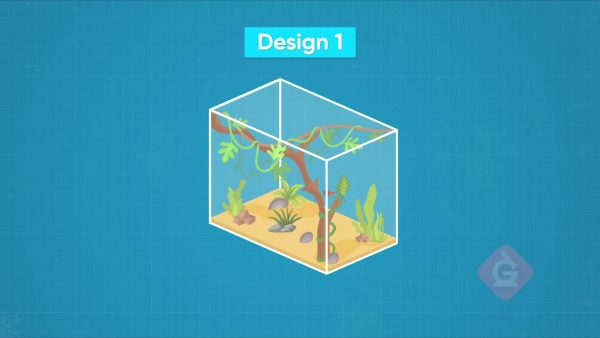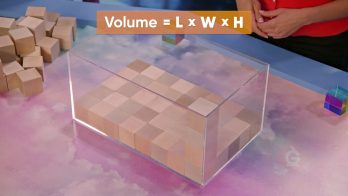Students learn to calculate the volume of a rectangular prism using the formula . They also calculate the volume of composite figures that are made up of two or more rectangular prisms.
To better understand calculating volume…
LET’S BREAK IT DOWN!
Cubic Units

Let’s say you have a box. You have smaller cubes that measure 1 unit by 1 unit by 1 unit. We call each one of these cubes 1 cubic unit. You find that exactly 16 cubic units fit in the box. We can use this as a measure of the volume of the box. Volume is the amount of space inside a 3-dimensional object. We can say the volume of the box is 16 cubic units. Try this one yourself. You have a box that can fit exactly 20 cubes that each measure 1 inch by 1 inch by 1 inch. What is the volume of the box?
Packing Toys

Let’s say you want to pack cube-shaped toys into a box for shipping. Each cube-shaped toy measures 1 unit on each side. We’ll call that 1 cubic unit. The base layer of the shipping container is 3 units by 4 units. You find you can fit 12 cubes in the base. Then you find you can fit a second layer of 12 cubes. When you put in a third layer of 12 cubes, the box is filled. When you add the number of cubes in each layer you get 36 cubic units. This is the volume of the box. When the third layer is added we see that the dimensions of the box are 3 units by 4 units by 3 units. We can also find the volume by multiplying 3 units by 4 units by 3 units to get 36 cubic units. The formula for a rectangular prism like the box is V = l×w×h. Try this one yourself. You have a box that measures 2 units by 5 units by 7 units. What is the volume of the box?
Fish Tank

Let’s say you want to get a fish tank that has a volume of at least 20,000 cubic centimeters. You find a fish tank that measures 50 centimeters by 30 centimeters by 20 centimeters. You multiply the three dimensions: 50 × 30 × 20 = 30,000 cubic centimeters. Since 30,000 cubic centimeters is greater than 20,000 cubic centimeters, you know this tank is big enough for your fish. Try this one yourself. You want to buy a fish tank that has a volume of at least 20,000 cubic centimeters for your friend. You find a fish tank that measures 30 centimeters by 30 centimeters by 40 centimeters. Is this fish tank big enough?
Sugar Glider

Let’s say you have a sugar glider and you want to get an enclosure for it. You see an interesting enclosure at the pet store that looks like it is two rectangular prisms put together to make an L shape. You want to find the volume of the enclosure. If you find the volume of each rectangular prism, you can add the two volumes together to get the volume of the enclosure. One prism measures 4 feet by 2 feet by 3 feet. To find the volume of that rectangular prism you multiply 4 × 2 = 8 and 8 × 3 = 24. The volume of this rectangular prism is 24 cubic feet. The other prism measures 4 feet by 2 feet by 2 feet. To find the volume of that prism you multiply 4 × 2 = 8 and 8 × 2 = 16. The volume of this rectangular prism is 16 cubic feet. To find the volume of the enclosure, you add 24 + 16 = 40. The volume of the enclosure is 40 cubic feet. Try this one yourself. You want to find the volume of an enclosure for a sugar glider. The enclosure is made up of two rectangular prisms. One rectangular prism measures 3 feet by 6 feet by 2 feet. The other prism measures 4 feet by 2 feet by 4 feet. What is the volume of this enclosure?

































































































































 Select a Google Form
Select a Google Form






 GENERATION GENIUS
GENERATION GENIUS




